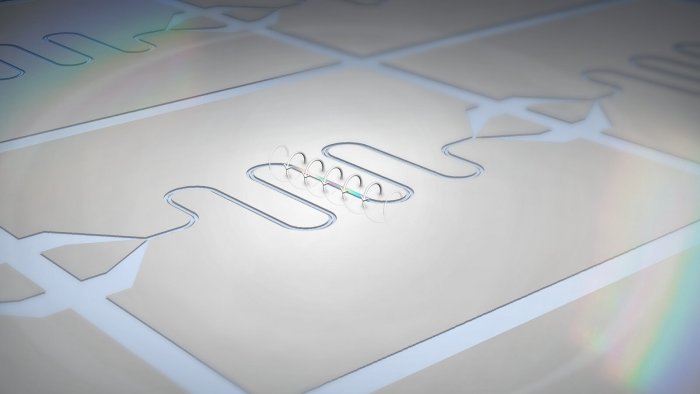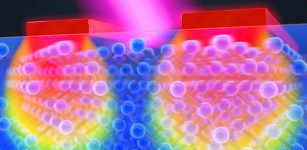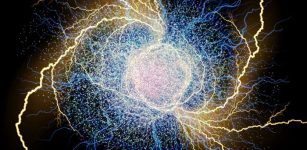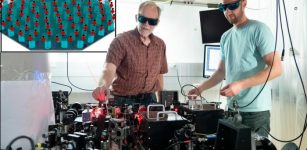“On Chip” Approach: Coupling Between Magnetism And Superconductivity For Manipulation Of Quantum Information
Eddie Gonzales Jr. – MessageToEagle.com – Researchers continue to look for new ways in which information can be manipulated and exchanged at the quantum level.
Now, scientists at the U.S. Department of Energy’s (DOE) Argonne National Laboratory have created a miniaturized chip-based superconducting circuit that couples quantum waves of magnetic spins called magnons to photons of equivalent energy.
 Researchers at Argonne have demonstrated an on-chip quantum circuit and realized strong coupling between a superconducting resonator and a magnetic device. The results introduce a new platform for investigating on-chip quantum magnonics and quantum information processing. Credit: Ellen Weiss / ANL
Researchers at Argonne have demonstrated an on-chip quantum circuit and realized strong coupling between a superconducting resonator and a magnetic device. The results introduce a new platform for investigating on-chip quantum magnonics and quantum information processing. Credit: Ellen Weiss / ANL
The development of this “on chip” approach marries magnetism and superconductivity for manipulation of quantum information, this fundamental discovery could help to lay the foundation for future advancements in quantum computing.
Magnons emerge in magnetically ordered systems as excitations within a magnetic material that cause an oscillation of the magnetization directions at each atom in the material—a phenomenon called a spin wave.
“You can think of it like having an array of compass needles that are all magnetically linked together,” said Argonne materials scientist Valentine Novosad, an author of the study, in a press release.
“If you kick one in a particular direction, it will cause a wave that propagates through the rest.”
Just as photons of light can be thought of as both waves and particles, so too can magnons. “The electromagnetic wave represented by a photon is equivalent to the spin wave represented by a magnon—the two are analogues of each other,” said Argonne postdoctoral researcher Yi Li, another author of the study. Because photons and magnons share such a close relationship to each other, and both contain a magnetic field component, the Argonne scientists sought a way to couple the two together. The magnons and photons “talk” to each other through a superconducting microwave cavity, which carries microwave photons with an energy identical to the energy of magnons in the magnetic systems that could be paired to it.
“By pairing the right length of resonator with the right energy of our magnons and photons, we are in essence creating a kind of echo chamber for energy and quantum information,” Novosad said.
“The excitations stay in the resonator for a much longer length of time, and when it comes to doing quantum computing, those are the precious moments during which we can perform operations.”
Because the dimensions of the resonator determine the frequency of the microwave photon, magnetic fields are required to tune the magnon to match it.
“You can think of it like tuning a guitar or a violin,” Novosad said. “The length of your string—in this case, our resonator of photons—is fixed. Independently, for the magnons, we can tune the instrument by adjusting the applied magnetic field, which is similar to modifying the amount of tension on the string.”
Written by Eddie Gonzales Jr. – MessageToEagle.com Staff










